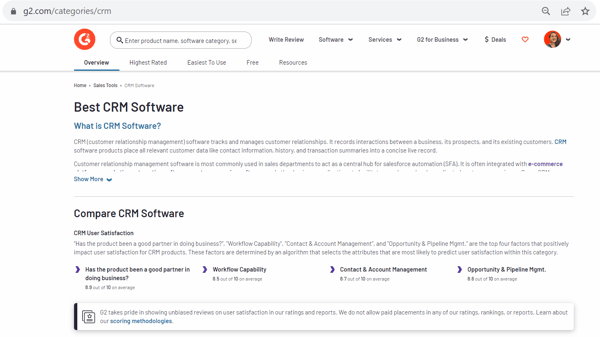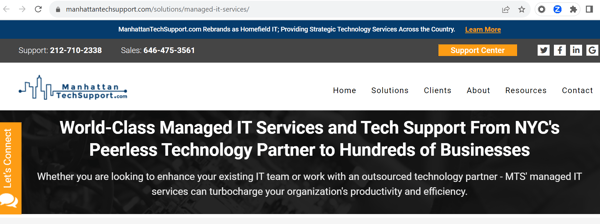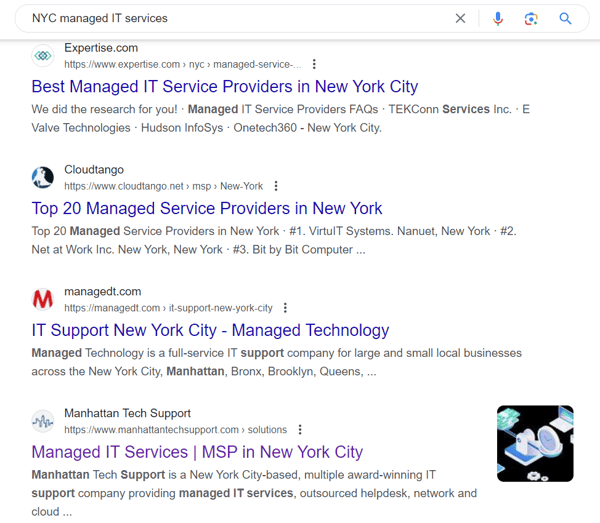October 29, 2023
 by Adam Steele / October 29, 2023
by Adam Steele / October 29, 2023

Technical search engine optimization (SEO) can be daunting. It’s a discipline that’s so huge it can feel difficult to know where even to start.
Without establishing strong technical foundations for SEO, achieving significant keyword rankings becomes challenging. Leveraging SEO tools can aid in simplifying the process. But, to excel on Google for your target keywords, prioritizing understanding and learning about technical SEO is essential.
Technical SEO is a wide umbrella that includes any technical process intended to improve your site’s organic search visibility.
The good news is that you don't need technical expertise to rectify prevalent technical SEO mistakes. If it makes your site faster or easier for search engines to crawl, index, and understand, then it’s technical SEO.
You could create the best content in the world and pull off the greatest outreach campaign of all time. But if your technical SEO is lacking, you won’t rank for your target keywords.
That’s because Google wants to give searchers the best possible user experience, so it gives fast sites that are easy for it to understand precedence in the search results.
If you don’t have the foundations in place through your technical SEO, you can’t build any authority in the search results. And if your competitors have optimized the technical aspects of their sites, then you’ll seriously struggle to keep up with them in the search results.
Plus, if you’re not on top of your technical SEO, you could make a serious mistake that completely derails your entire SEO strategy. For example, misusing your robots.txt file could block your entire site from Google’s crawlers.
One important thing to note is that you don’t need to be a developer to reap the rewards of technical SEO.
It’s much more important that you understand how search engines work and how to communicate changes you want to make to your site to a developer than how to code yourself.
You’ll definitely benefit from a basic understanding of HTML, CSS, and JavaScript to get the most from your technical SEO efforts. But don’t think you need to be able to build a website yourself to be able to drastically improve your site’s technical SEO, especially with all the plugins around designed to make marketers’ lives easier.
While Technical SEO remains integral in the SEO landscape, conducting a thorough technical SEO audit is crucial to pinpoint the necessary website optimizations.
Aspects that need to be reviewed:
Your site’s technical SEO is crucial to its success in search engines, and you don't need a degree in computer science to make improvements to your site that help boost its search visibility.
But where do you start? Here are the biggest technical SEO mistakes business owners make – and how to fix them:
Google’s algorithm analyses a handful of factors on each page to determine which searches it would be a relevant result for. These factors give you a chance to tell Google exactly what a page is about – and what keywords you want it to rank for.
Optimize your pages for keywords effectively, and everyone wins:
Target the wrong keywords with a page – or none at all – and you won’t rank for the phrases that could make a difference to your business.
For example, without targeting the keyword, G2 wouldn’t rank at the top of the organic search results for a term as competitive as ‘CRM software’:
To make sure you’re in with a chance of ranking for your target keywords:
You’ll notice G2’s CRM software page ticks all these boxes:

If it didn’t, it would struggle to rank for this term, given how competitive it is. Of course, if SEO success were as easy as following these steps for every page on your site we’d all sit at the top of the Google search results for our target keywords.
But fail to follow best practices when it comes to optimizing your pages for your target keywords, and you simply won’t rank for any terms worth ranking for.
There are few things more critical to your SEO success than whether you’re targeting the right keywords. To make sure you’re hitting the keywords that have the biggest benefit to your business, perform thorough keyword research.
During this process, don’t overlook performing a competitor keyword analysis to make sure you’re not missing out on any terms your competitors are ranking for. Claiming the top spot for these terms hits two birds with one stone – boosting your search visibility while diminishing the competition.

Source: Manhattan Tech Support’s Managed IT Services page
As a result, this page appears near the bottom of the first Google results page for the term ‘NYC managed IT services’, despite that being the keyword it should be directly targeted at:

Tweaking the target keyword of this page is a simple change that could ultimately have a huge impact on this small business’s bottom line if it were to improve its ranking for this term by just a few spots.
Review the keywords you’re targeting – especially with your key services pages – and make sure they match up with exactly what you want to rank for to ensure you’re not making a similar mistake.
Another common mistake is keyword stuffing – the practice of forcing your keyword into your content an unnatural amount of times. While this used to be an effective tactic way back in the early days of search, it’s an incredibly outdated practice that will actually get you a penalty from Google today.
Mention your keyword a few times throughout your article in a natural way, but be sure not to try and cram it in every paragraph.
Before you optimize any page for a keyword, make sure its content matches the searcher's intent.
While Apple would love to rank top for the term "best smartphones," users searching Google for that term are looking for an unbiased comparison, and they’re not going to get that from one of the biggest smartphone brands.
So before you race to try and rank for a keyword, check what kind of content appears at the top of Google’s results for it and make sure the content you produce aligns with that.
If you can’t produce a genuinely quality piece of content for a term – as Apple couldn’t for "best smartphones," then your efforts will be better spent optimizing for other keywords, even if they receive fewer searches a month.
If your site loads slowly, your rankings will suffer. Site speed is not only a direct ranking factor but also has a big impact on the UX signals Google uses to measure a site’s quality.
For example, bounce rates increase by 50% if your website takes two extra seconds to load. And the more people bounce off your site, the lower you’ll sink the search engine results pages (SERRPs)
So, ensure site speed optimization is at the top of your technical SEO to-do list.
Using uncompressed media files. Uncompressed media files can grind your site speed to a halt. Steer clear of site speeds like this by being careful not to overload your site with too many uncompressed media files. You can ensure this by optimizing and lazy loading your images, as well as leveraging browser caching.
Today, the majority of all website traffic comes from mobile phones. Moreover, your mobile site is about to become more important than ever, with Googling currently rolling out mobile-only indexing.
That means that soon, the only version of your site in Google’s index will be the mobile version. That poses a big problem for any site with a good desktop speed but a glacial mobile site speed.
To avoid making the same mistake, be sure to check both versions of your site in Google’s PageSpeed Insights tool and prioritize changes that improve your mobile site’s speed in advance of Google’s mobile-only indexing.
Site architecture is one of the most overlooked aspects of technical SEO. However, it’s an incredibly powerful tool that can be used to distribute link equity throughout your site efficiently.
Used intelligently, internal links can be leveraged to give your less established pages a boost from your most authoritative pages.
Moreover, your site architecture is one of the few SEO levers you can pull that’s 100% in your control. You can influence exactly how link equity is spread across your site without having to rely on any external factors.
A particularly effective approach to site architecture is to create topic clusters that build your site’s authority and relevance in a particular subject matter. Topic clustering and interlinking is exactly how G2 established its authority, and it’s a method we recommend if you want to follow suit.
Linking between related resources to create a topic cluster doesn’t have to be complicated. Of course, most sites’ most authoritative page is its homepage. A simple way to help new pieces of content become established in the SERPs as quickly as possible is to add a section to your homepage that automatically links to your latest pieces of content.
This will send link equity directly from your most established page to your newest pages, helping to boost their authority quickly. Beyond these specific techniques, be sure to use every opportunity you spot to link between pages on your site naturally. This will help create as tight of an internal linking structure as possible, which will give your less authoritative pages across your site an SEO boost.
The easier your site is for Google to understand, the more likely it is to be favored by its algorithm.
Structured data, or schema markup, is a way of speaking directly to search engines so they don’t have to work to interpret the content on your site.
Instead of leaving Google to guess the context of a certain piece of content, you can tell Google exactly what kind of information it’s interpreting – without changing the experience for human visitors.
This allows Google to crawl and index your site more effectively, which will improve your organic rankings. Marking your content up with structured data also means it can appear as a rich snippet in Google results.
This adds extra information on top of the title and description, making your page more appealing to searchers:

Tasty’s chocolate chip cookie recipe appears as a rich snippet in the SERP
This can be particularly effective at driving the click-through rates of product pages. For example, by using structured data to show its 4.4-star Google review rating, Jitbit has set its helpdesk ticketing system apart from the competition in the SERPs:
Structured data also gives you a chance to appear in SERP features such as carousels, increasing your real estate in the Google results for your target keywords.
Structured data is another aspect of technical SEO that it’s in everyone’s best interest for you to get right:
Because of this, Google has created structured data guidelines you can follow to implement schema as effectively as possible.
You can also find the full structured data vocabulary on Schema.org to find the best markup for each instance. Of course, if you’re not a developer, you won’t want to be making changes to the back end of your site.
Luckily, there are plenty of plugins, like Schema App Structured Data for WordPress, that allow you to add structured data to your pages without having to touch the source code.
For the best results, get to grips with the basics by reading Google’s guidelines, then use a plugin so you don’t need to get a developer to implement each piece of schema markup for you.
Duplicate content – having the same content on multiple pages on your site – can wreak havoc on your ability to rank for your target keywords.
It not only makes your site bloated and difficult for search engines (and users) to understand but also leads to keyword cannibalization issues that can seriously hamper your ranking potential.
More often than not, duplicate content is caused by a technical issue rather than a human mistake. For example, your CMS might create two versions of a page: one that ends in a backslash and one that doesn’t. Or one where the URL slug begins with a capital letter and another that’s entirely lowercase.
In Google’s eyes, each of these URLs are independent pages:
And that’s not all. Duplicate content issues can also be caused by the www and non-www or http and https versions of a site being indexed by Google.
You can also run into duplicate content problems if a page exists as both site.com/example and site.com/catagory/example.
As you can see, there are plenty of ways duplicate content can be caused. Luckily, it’s a simple (although time-consuming) process to fix.
The easiest way to identify if your site is suffering from any duplicate content issues is to use a site crawler to get a full picture of every URL associated with your site.
From there, you can find duplicate content issues and resolve them.
If technical SEO issues plague your site it will seriously struggle to rank for your target keywords.
While technical SEO can be daunting, hopefully, you now understand five areas you can tackle today – no technical expertise required. This will give you the best possible chances of outranking the competition and getting the most from the rest of your digital marketing efforts.
Discover search advertising software and gain a more prominent position on SERP.
Adam Steele is the Founder and COO at Loganix, a SEO fulfilment partner for agencies and marketers. Loganix builds easy-to-use SEO services that help businesses scale. Check out their SEO guides and templates on the blog.
Are you a small business owner struggling to stand out online?
 by Adam Steele
by Adam Steele
It’s a well-known fact of human development that adults struggle to learn new languages as...
 by Branko Kral
by Branko Kral
Technical SEO. A short phrase that has been known to strike fear into the hearts of SEOs and...
 by Ken Marshall
by Ken Marshall
Are you a small business owner struggling to stand out online?
 by Adam Steele
by Adam Steele
It’s a well-known fact of human development that adults struggle to learn new languages as...
 by Branko Kral
by Branko Kral


